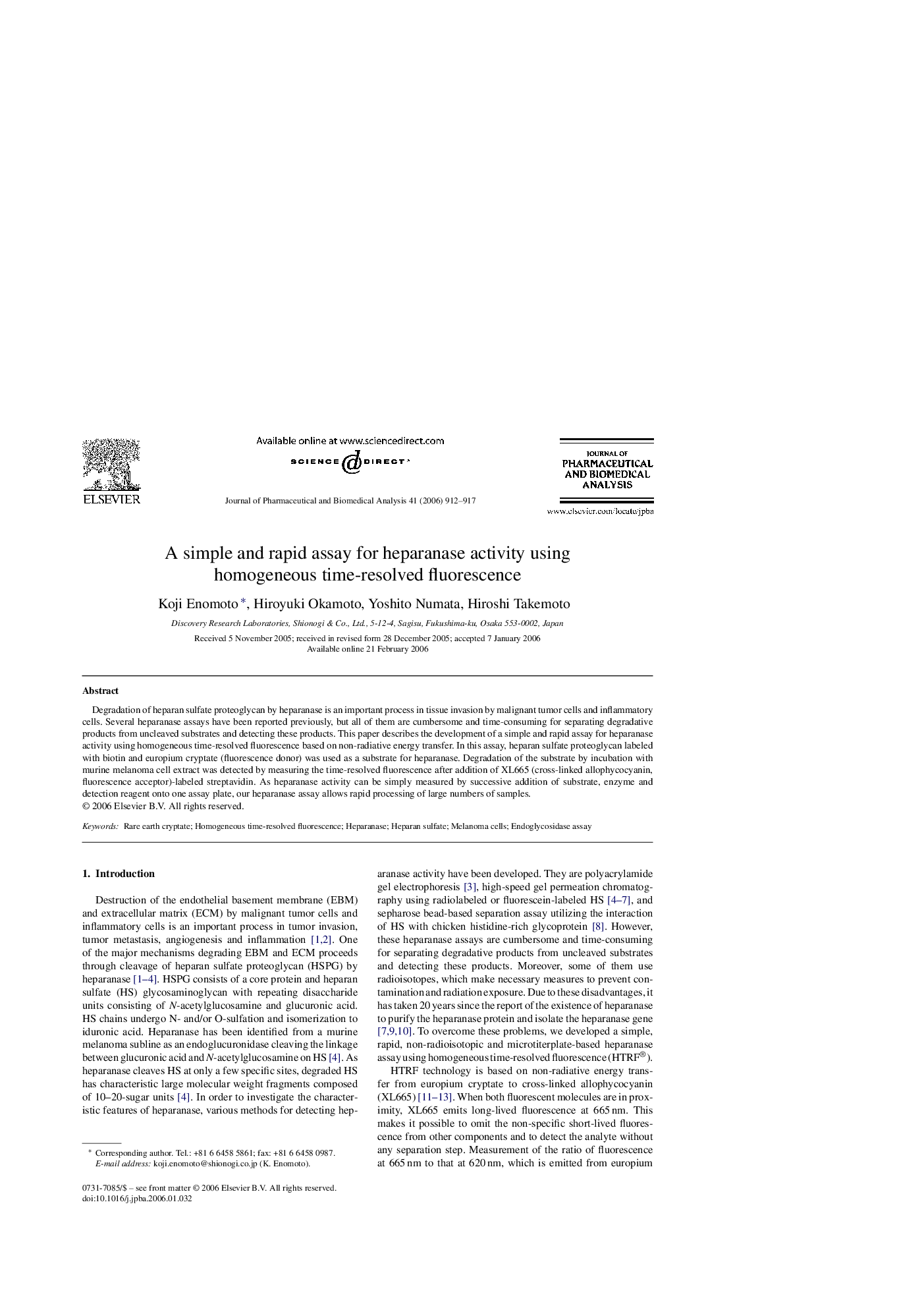| Article ID | Journal | Published Year | Pages | File Type |
|---|---|---|---|---|
| 1224573 | Journal of Pharmaceutical and Biomedical Analysis | 2006 | 6 Pages |
Degradation of heparan sulfate proteoglycan by heparanase is an important process in tissue invasion by malignant tumor cells and inflammatory cells. Several heparanase assays have been reported previously, but all of them are cumbersome and time-consuming for separating degradative products from uncleaved substrates and detecting these products. This paper describes the development of a simple and rapid assay for heparanase activity using homogeneous time-resolved fluorescence based on non-radiative energy transfer. In this assay, heparan sulfate proteoglycan labeled with biotin and europium cryptate (fluorescence donor) was used as a substrate for heparanase. Degradation of the substrate by incubation with murine melanoma cell extract was detected by measuring the time-resolved fluorescence after addition of XL665 (cross-linked allophycocyanin, fluorescence acceptor)-labeled streptavidin. As heparanase activity can be simply measured by successive addition of substrate, enzyme and detection reagent onto one assay plate, our heparanase assay allows rapid processing of large numbers of samples.
